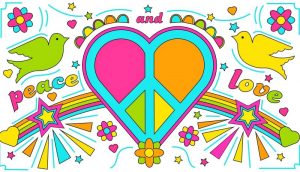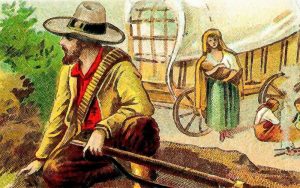Counterculture
The term counterculture was first used in the twentieth century, in the 1960s, to refer to the emergence of protest movements by youth against the dominant culture. Among its distinctive features are free love, hedonism, the use of psychedelic drugs, feminism, among others. Although the expression counterculture has several meanings, it is necessary to distinguish within this one, diverse tendencies, in particular, those that are denominated "new culture", "cultural rupture", or "the search of the equilibrium".
What is counterculture?
Counterculture refers to a set of cultural manifestations, attitudes, values, norms used by a group that opposes or rejects a dominant culture. This term was created by sociologist Theodore Roszak and serves to designate a subculture of a particular genre.
Characteristics of counterculture
- It reverses the norms and values of the dominant culture and defines itself with respect to it.
- It is presented as the antithesis of the dominant culture at all levels. For example, for modern technology, the counterculture would be craft and traditional knowledge.
- It promotes sexual freedom.
- It is generally opposed to the consumer society. However, the elements of counterculture are taken up by the commercial system that transforms them into advertising slogans or new products. For example, faded or torn trousers are now being sold.
- It values nature.
- It promotes respect for minorities.
History
The counterculture phenomenon originally originated in the United States and it is in this region where it had its most profound effects. The American influence spread to other parts of the world, especially Western Europe. It was always associated with protest movements.
It is the American historian Theodore Roszak, who in 1968 uses the term counterculture in his work The Birth of a Counterculture. Certainly, countercultural manifestations have existed in all societies, but this expression particularly alludes to an organized movement that is maintained for a certain period of time. Examples that could illustrate the phenomenon of counterculture are the Beat Generation that took place in the 1950s, the hippie movement of the 1960s or the punk movement that originated in later years.
Some countercultural movements
Hippie movement
The word hippie is derived from the English word “hip” which means “initiated“, in relation to what is new or of unknown origin. For others, it comes from the African word “hipi” which means “open your eyes“. In any case, this movement of the 1960s was considered anti-conformist and was therefore, opposed to the society pre-established at the time. The hippies proposed new norms and values that belonged to their counterculture. Thus, they claimed a new identity defined in a negative way by the dominant society. Its origin comes from the Beat Generation of the 1950s.
Punk movement
It is a movement that started in the working class in England and had an enormous impact on social and musical scene in different parts of the world. This movement was against the established order and social injustice. However, its essence was distorted by the commercial interests of the music world.
Feminist Movement
Feminism was one of the most important political events of the 20th century. The gender difference is universal and transversal as it impacts all classes, classes, religions, etc. Feminists demonstrated that the domination of men over women was not natural but rather a social construction that had to be combated and abolished. This movement exalts feminine values and, in some cases, even repudiates the masculine.
The underground comic
The underground comic emerged as a response against the industrial comic that was content to convey a message in accordance with established social norms. This proposal of comic wanted to show the true reality that was lived in the United States. Its graphic language, its aesthetics broke with what was seen in traditional comics.
Examples of counterculture
Mexico
Although the counterculture was born in the United States, the phenomenon spread rapidly in Latin America where, unexpectedly, it found a privileged way of expression in literature, especially during the 60’s and 70’s with the literary movement called the “Onda” or “Wave” in English. Its best known protagonist was the Mexican writer José Agustín, who considered that the counterculture was the expression of youth and of collectives that from the marginality, surpass, reject and confront the institutional culture.
Chile
During the 1980s, the last of Pinochet’s dictatorship, several clandestine artistic manifestations of cultural resistance emerged that opposed this dictatorial regime. This is how meeting places were created such as the Matucana 19 or the Trolley where cultural expressions such as dance, painting, comics or theater converged.
How to cite this article?
Briceño V., Gabriela. (2019). Counterculture. Recovered on 23 February, 2024, de Euston96: https://www.euston96.com/en/counterculture/










